Poetry, science fiction, fantasy, horror, and culture from a Lao American perspective.
Tuesday, March 23, 2010
Down to the Big Easy
Our time will include a film Screening of “A Village Called Versailles” followed by Q & A with Leo Chiang, film maker. The hope throughout the process is to bring relevant practitioners to share tangible examples of “leadership” and “community-building” in social justice movement work.
We'll also be connecting with New Orleans Workers’ Center for Racial Justice at the First United Methodist Church and meeting Colette Tippy, Program Director & Saket Soni, Executive Director of the organization. The team is also scheduled to meet Mary Queen of Vietnam CDC's Environmental Justice Coordinator, Lauren Butz, and the Executive director of VAYLA-NO, Minh Nguyen.
I look forward to sharing the full results with you upon our return!
Monday, March 22, 2010
[Lao Orchestra] By the Numbers: $10K
Try: 1/6th of the salary of one player of the St. Paul Chamber Orchestra, or a little over 1 1/2 month's pay. With six weeks of one person's pay, you could acquire all-new instruments to create a functional, 13-piece Lao orchestra.
Of course, I simplify here.This doesn't take into account the cost for an orchestra's clothing, space rental & stage tech, transport & storage, marketing, administration or honorariums/salaries for the musicians and coordinator.
But in terms of obtaining just the instruments, the figure we've seen quoted to us is $9,671.
If you had an audience of 100 people paying an admission of $10, 4 times a year to a concert, you could make back the price of the instruments in 2 years or 10 performances.
1,000 people donating $10 or the price of a 10-piece bucket of KFC chicken could fund the beginnings of a Lao traditional music renaissance in their community. You wouldn't give up a bucket of fried chicken for that?
But with the exception of Wyoming with their estimated Lao population of 21 and North Dakota with 31 known Lao residents, every other state has more than enough people who could commit to revitalizing the tradition of Lao classical music and art.
$9,671 can get you:
1 Ranat thum (metallophone with steel keys): $1,175
1 Ranat ek (wooden xylophone): $959
1 Ranat thum lek (wooden xylophone): $959
2 Kim (hammer dulcimer, $1,099 each): $2,198
1 Gla jub pe (long neck flute): $699
1 Saw Sam Sai (3-string fiddle): $499
1 Saw Ou (2-string fiddle): $335
1 Saw Duang (high-pitched 2-string fiddle): $495
1 Larng gong (18 piece gong): $1,185
1 Glong tuk (drum): $549
1 Ta Phon Mon (royal drum): $327
1 Cymbal set: $37
1 Bell set: $17
And shipping it all? $237.
Even adjusting for inflation, our community could stand to gain so much from investing in our classical music tradition, a revitalization of a dialogue we've been having with our heritage over 650 years as a people.
Imagine if we did quarterly performances for just 10 years. 40 shows to just 100 members of your community at $10 a person. You'd raise $40,000, enough to send someone to college or start a library in Laos. You'd have 400% return on your investment while expanding our knowledge and appreciation of our culture.
That's just in one decade. Imagine what would happen if you expanded that audience and you made it something that was a permanent gift to your community for the centuries to come?
So, I ask. Do you choose this:

Or this?:
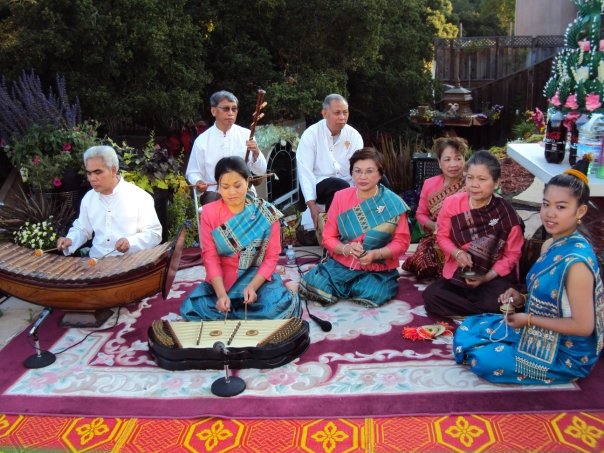
Saturday, March 20, 2010
[Laos] Questions for Veterans
There were approximately 60 questions and the kit was designed to help many of the veterans get their thoughts down on paper or recorded with the help of their friends and families. Maybe in the future I'll get a chance to refine it.
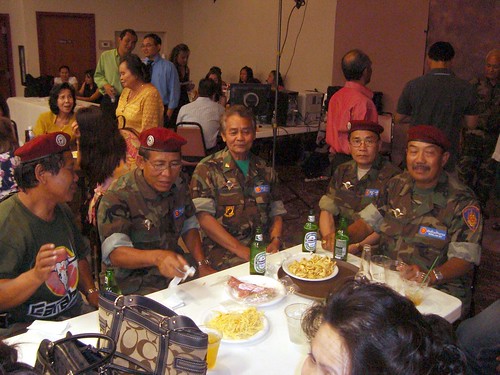
But in the meantime, while I'm getting that sorted out, here are some quick pointers. Most people suggest breaking interviews down into five areas, although you should really let the veterans talk about their experiences in the way they want to talk about it.
1) Basic details: When and were they born? Who are their parents, siblings and other memorable relatives? What were they doing before the war?
2) Early days: How did they get recruited? What was their training like? Did they get any special training? What was it like adapting to military life?
3) During the war: Where were they stationed? What kind of action did they witness, and what were their typical duties? Who became their friends? How did they stay in touch with their families? What did they do for recreation?
4) End of the war: Where were they when they heard the war ended? How was the readjustment to being a civilian? What has their contact with other veterans been like?
5) Other: What were the lessons they learned after all of this? What would they want to share with others?
Obviously, these are just beginning questions and as you learn more you should ask for more detail and clarification. You'll be surprised what you can learn! Remember: A good interview isn't done in a single day but is collected over several different sessions. Good luck!
[Laos] Why Veterans Oral Histories?
Many of the younger members of our community may not be aware that much of the conflict was classified and considered secret by many of the governments involved. To this day, there are few Americans and fewer still outside of America, France and Southeast Asia who understand what took place during that century due to deliberate obfuscation and evasive manipulation of the historic narrative-the way we tell the story of our experience.
For decades in the US, many have often sought to streamline the story of the veterans of the war for Laos for easy comprehension, but this is ultimately a disservice to all of our cultures. As I've traveled across the US over the last decade, I've encountered many stories that make it clear to me that the role of Khmu, Tai Dam, Iu Mien, Nung, Hmong, Lao and the Thai among others are being poorly recorded and documented.
Facing 35 years since the official end of the war, I find myself feeling now more than ever we need our communities to come together and reassemble a people's history of what truly happened out there. Beyond the 'official' and sanitized versions we've heard. We must collect and gather our history for many reasons, if for no other reason than if we are not interested in our own history and culture, how can we ask others to be? And if we are not interested in our own history, it will be written by others and our sense of ourselves will be controlled and defined by those who do not possess a compelling stake in the matter.
To me, that is wholly unacceptable.
Thursday, March 18, 2010
Supporting Lao American classical music?

Looking at European-style classical music, we might find some inspiration for our own future processes and goals from Chamber Music America, who offers funding for the composition of new work, including the composer's fee (awards of $5,000 to $20,000 each), the ensemble's rehearsal honorarium ($1,000 per ensemble musician), and copying costs (awards of up to $1,000 each).
Unfortunately, there are few parallel resources in the Lao community in America, with the exception of the Lao Heritage Foundation, which does not presently offer scholarships, fellowship or similar funding for Lao classical artists in America.
But how wonderful it would be if every year, even if for just a decade, we could be certain there were funds to truly support musicians getting the time to fully practice their craft and build a love for it in our community.
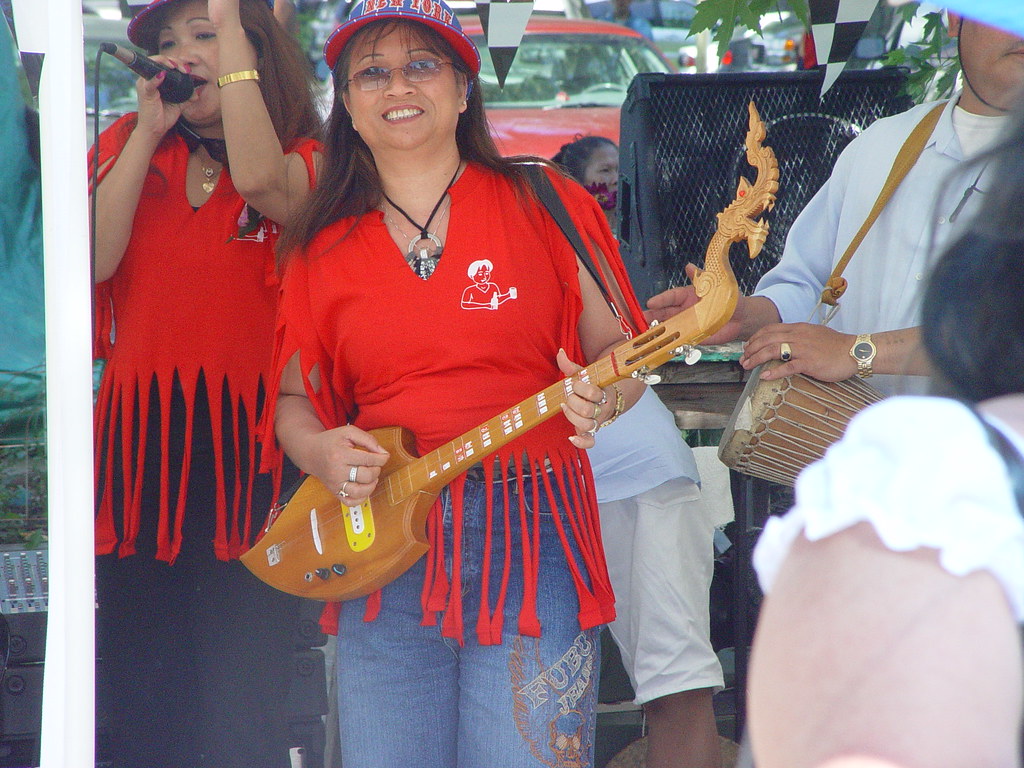
Looking at the Chamber Music America model, they define chamber music as music for small ensembles (two to ten musicians) whose members perform one to a part, generally without a conductor. Compositions may represent a diverse musical spectrum including contemporary art music, world music, and works that include electronics. New works created through this program must be performed a minimum of three times in the United States.
From a Lao American point of view, this should be of significant interest to our community. A full classical Lao orchestra would have around ten to twelve musicians, although some circumstances may allow fewer to perform depending on space and other variables.

To my knowledge, Souphine Phathsoungneune is one of the only Lao composers in the US to receive substantial recognition and a commission to create one Lao opera which was performed in Vermont in 2004. To be honest, given the size of the Vermont community, this surprises me, and I would think particularly for larger Lao communities elsewhere should serve as a positive example of finding support for our classical composers.

But of course, across the country, Lao Americans really have to begin asking the right people to help these efforts, and understand for themselves what the value will be for us years and centuries from now as we define ourselves as a people and as a community speaking to other communities.
Wednesday, March 17, 2010
Vincent Who? and Thung Phetakoune

Growing up in Michigan in the 1980s as a Lao American, that incident always stuck with me. It was a deeply formative part of my experience as a young man. I became aware that it could as easily have been me, or anyone.
I find myself thinking more and more about this, and another case in 2001, when I was first starting to fully reconnect with the Lao community after many years on my own complex journey.
On July 14th, 62-year old Thung Phetakoune was trying to get home from the store in New Hampshire when he was pushed violently down onto the ground by 35-year old Richard Labbe. Phetakoune died two days later. He was a veteran of the Royal Lao Army that had been secretly supporting the United States interests during the Southeast Asian wars, rebuilding his life with his family. He had escaped and survived the refugee camps and had wanted nothing more than to go on with life. And this was how he died, one summer day, alone and far from the country he was born in.
Labbe told police: “What’s going on is that those Asians killed Americans and you won’t do anything about it so I will ... Call it payback.” In the course of his argument he referred to Phetakoune as "one of you fucking Vietnamese."
In the course of the trial, Labbe agreed to plead guilty to manslaughter, punishable by 15 to 30 years in prison, with language that references Labbe's alleged racial hostility toward the victim. But he was not charged with a hate crime.
Somphou Phetakoune, Thung Phetakoune's son, said he forgave Labbe and understood that Labbe had been drunk at the time of the crime and was hot-tempered. In his statement, Labbe told the survivors that he liked Thung and their family, and that prior to this he was always helpful to his Lao neighbors.
And so, I wonder what do we make of all of this. When Vincent Chin was murdered, it galvanized the Asian American activists and grew into what we might consider the modern Asian American movement, in all of its forms. Political, social and artistic. Today, the When Thung Phetakoune died, it ended on a quiet, understated note.
Was it best for things to end this way and not another? Does it say something about how far we've come since Vincent Chin, or how far we haven't?
In a few days, the Lao community in Minnesota will be celebrating the veterans and their families after 35 years since the end of the war, 30 years since many of them first came to the US. There will be music and food, dancing, memories. And, I hope, a discussion of the future. How do we rebuild, what do we remember, what do we leave behind? These are fair questions.
For more information on the screening of Vincent Who?:
http://www.facebook.com/event.php?eid=349666148092&ref=nf
Monday, March 15, 2010
24 Years of Tales of the Unanticipated! 3/31!
On March 31st, the non-profit organization SF Minnesota hosts a benefit reading celebrating the release of the newest issue and 24 years of publication. The reading is at the Loft Literary Center at 1011 Washington Ave. S. in Minneapolis at 6:30 PM.
Tales of the Unanticipated has published considerable work by Minnesota and Wisconsin writers and artists, as well as work from Australia, Spain, the UK, Canada, and all over the Continental US. The wide-ranging publication has included innovative, offbeat science fiction, fantasy, horror, hybrids of the above, and unclassifiable fiction, poetry, and artwork under the umbrella of speculative fiction, as well as interviews with authors in the field.
Besides myself, other scheduled readers include Twin Cities writer Eleanor Arnason, the author of five novels, including Daughter of the Bear King (1987), A Woman of the Iron People (1990), winner of the Tiptree and Mythopoeic Awards, and Ring of Swords (1993), winner of the Minnesota Book Award; as well as fiction, poetry, and essays in such markets as Asimov's Science Fiction, The Magazine of Fantasy and Science Fiction, Orbit (Damon Knight, ed.), and 15 issues of TOTU, including #30. She has a chapbook forthcoming from PM Press, and a short novel, Tombs of the Fathers, forthcoming from Aqueduct Press.
Wisconsin writer Kelly McCullough will be reading. His first novel, WebMage (2006), was followed by the sequels Cybermancy (2007), Codespell (2008), and MythOs (2009). The WebMage books are a fantasy-cyberpunk hybrid set in a universe where an ever-increasing number of life threads has forced the Greek Fates to upload the great loom of Fate into a computerized system. Kelly's 20-plus short works include fiction in TOTU #s 21 and 22 and poetry in #26.
Mankato writer John Calvin Rezmerski is the editor of The Frederick Manfred Reader, author of several books and chapbooks of poetry, including 22 from TOTU, a collection of his poetry from Tales of the Unanticipated, and poems and essays in a wide variety of markets, including the Wall Street Journal. His latest publication is the chapbook Keeping Caedmon's Faith, released by Red Dragon Press, which will publish a book of his poetry in 2010. He is a member of the performance-art group Lady Poetesses from Hell, for whom he sometimes channels the work of Grace Lord Stoke and Emily K. Dick.
Works that originally appeared in TOTU have received the Rhysling Award for speculative poetry, and have been reprinted in Year's Best SF, Year's Best Fantasy (both David G. Hartwell & Kathryn Cramer, co-eds.), and the Science Fiction and Fantasy Writers of America's Nebula Awards Anthology!
We're excited to see you there!
Found to air on Bravo this March
This month, FOUND is airing on the "Bravo!FACT Presents" episode "Through the Eyes of a Child." If you get a chance, catch it!
And remember, if you're looking for other films about the Lao experience, we've talked about many of them earlier: http://thaoworra.blogspot.com/2010/01/laotian-film-festivals-films-to.html
I am excited that many of the films now emerging are taking us to a point where we can critically examine them not merely as documentary objects but artistic objects and experiences. Found, like Nerakhoon, covers familiar ground without descending into the obvious. Documentary without being hagiographic. Aesthetic, but rarely overwrought. Here's to future projects!
LATINOS ARTS [MN] Call for Submissions
With funding provided by the arts and cultural heritage fund from the vote of the people of Minnesota on November 4, 2008, CLAC and the Humanities Center seeks art submissions for:
LATINOS ARTS IN MINNESOTA: A VIDEO DIARY
A first-of-its-kind project, this one-hour documentary will capture the work of some of Minnesota’s finest Latino artists as they address issues of importance to the State’s Latino community. Artists will be asked to portray how our community envisions the impact of Latino culture on Minnesota in the future.
This program will be produced by Twin Cities Public Television (tpt) and will air on tpt’s Minnesota Channel. It will also be distributed for use in classrooms and will be available in libraries throughout the State.
Artists in all genres: Photography, poetry, dance, theatre, music, media arts, performance art, sculpture, etc. are encouraged to apply.
To Apply Please Submit the Following Required Materials:
Current Artistic Resume or CV – can be of any length.
An artist statement which includes 3 dominant themes in your work as they relate to the Latino community (for example: faith, isolation, language.) 1 page maximum (12 point, Times New Roman or Arial font, 1 inch margins.)
3-5 examples of your work.
Images in JPEG format.
Audio in MP3 format.
Video on DVD or in WAV files.
Text in Word (DOC) or PDF format.
Written examples not to exceed 20 pages total.
Deadline:
March 17, 2010 – Received, not postmarked.
Send to:
Lorena Duarte, Project Coordinator, lorena_duarte@hotmail.com,
Please put SUBMISSION in the Subject heading.
Or mail to: 4234 39th Ave. So., Minneapolis, MN 44506
Refugee resettlement and the schools
'The Welcome' is nice, but effective resettlement and support can't stop there.
Real school engagement is not just about setting aside one special day or encouraging really exotic-looking show and tell moments. It's not something that should be done just by a small body of the ELL or multicultural student services staff, but it's a process that needs to be a commitment from the whole school, from teachers to administrators, librarians and even cafeteria staff.
There's some amazing things that are possible. As many others have pointed out, refugees spending time in America often give back more than they borrow over the years. But at the same time, as we look at the experiences in South Philadelphia, where over 50 Asian students were attacked in the high school this year or the case of Lori Phanichone in Storm Lake, Iowa, we can see there are many complex dimensions to creating a vibrant and effective environment for our students.
No one community is going to have all of the answers, but if a community doesn't try to find answers it can live with, the results tend to be disastrous.
Time
It's been a while since I'd thought about the nature of time in a while, but I can see her point...
At least the last few years seem like Daylight Savings has started on weekends so we have fewer missed meetings on Mondays.
Monday, March 08, 2010
VA Commission for the Arts to be eliminated?
On Sunday, February 21, the House Appropriations Committee adopted a recommendation that state funding of the Virginia Commission for the Arts be cut by 50% in 2010-11 and that the agency be eliminated by July 1, 2011. The Senate Finance Committee has adopted the proposal of outgoing Governor Kaine that state funding for the Commission remains at the same level as the 2009-2010 state appropriation after the budget cuts.The poor economy and declining sales revenues were cited as reasons for the cuts. I hope Virginians are able to mobilize resources and work with their legislators to prevent the wholesale elimination of the Commission. State councils and commissions for the arts can play a vital and key role in the community in boosting economic development, particularly for newer American communities.
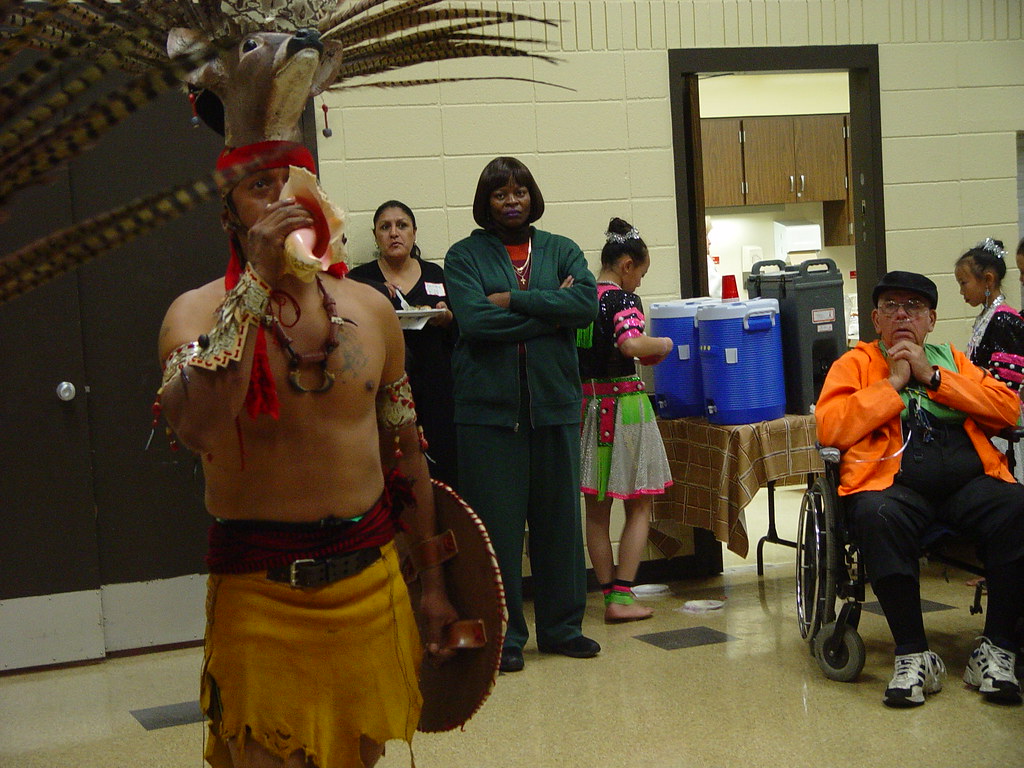
I've spoken at length on this issue in the past for other states, but it bears repeating that a healthy engagement with the arts allows many refugee and immigrant communities opportunities to develop key transferable skills and mechanisms for expression and participation in our democracy.
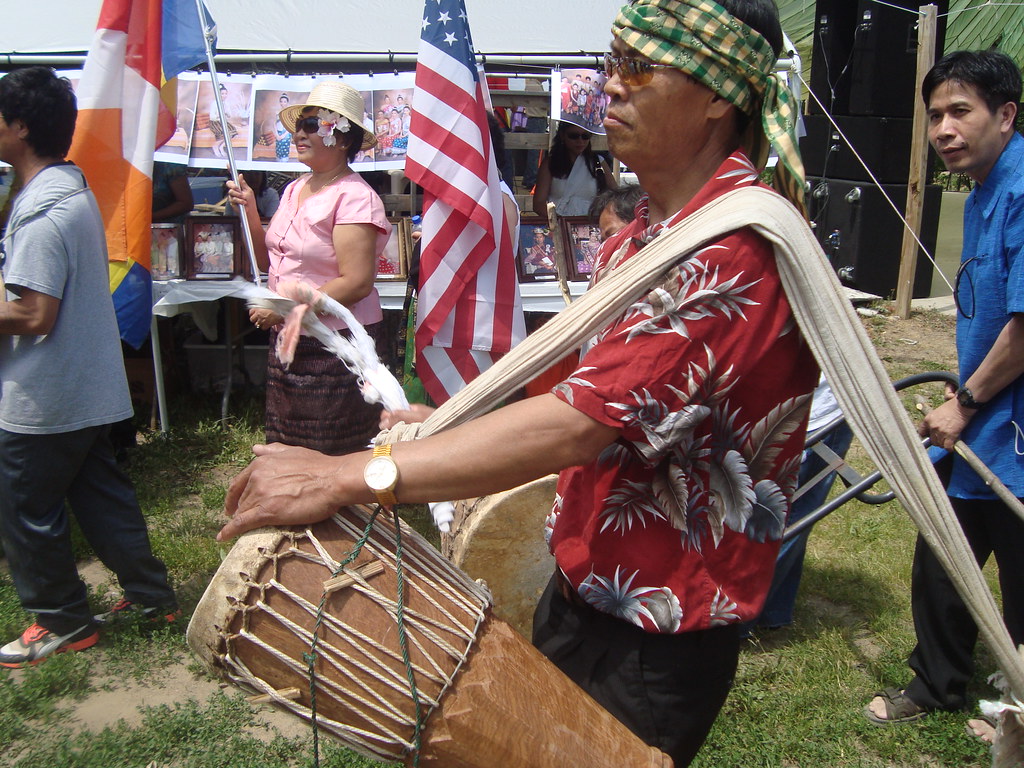
These include technical skills, including technology and computer use, research, marketing, logistics and budgeting, public speaking and advocacy, events planning, networking and resource development, as well as obvious verbal and non-verbal language skills.
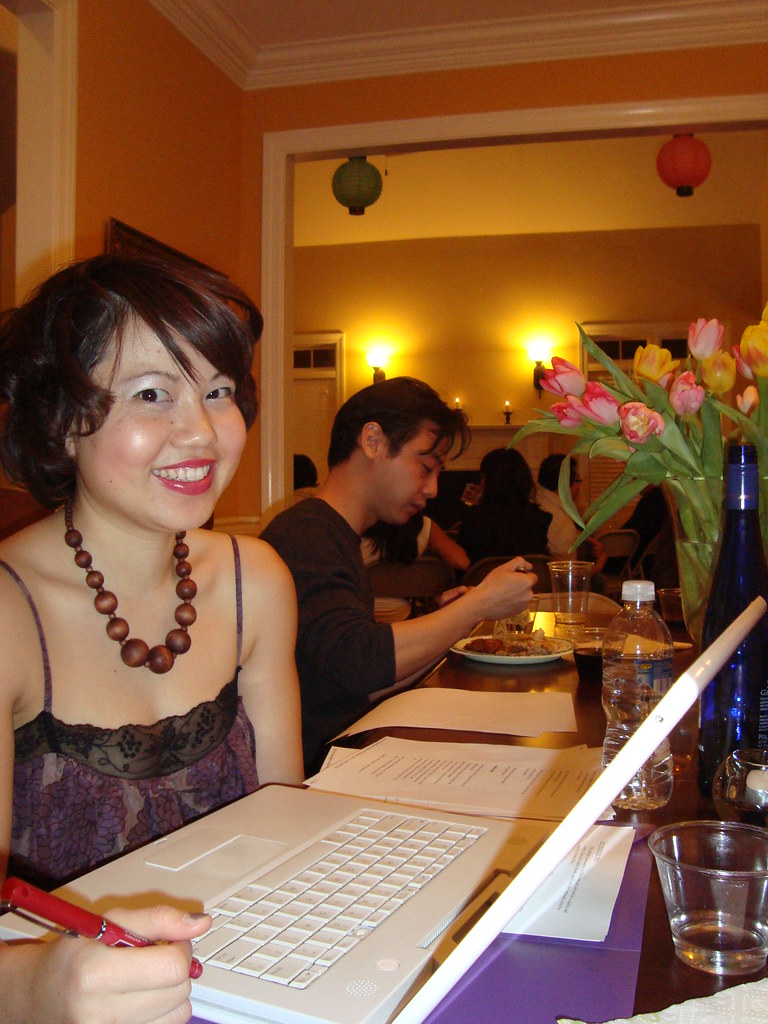
Economically, many artists contribute to the economic vitality of their states by accessing vendors for printing, space rental, food, transport, lodging and other services, including the development of festivals, concerts and exhibitions that attract both local and out-of-state visitors.

Socially, artists who assist youth programs such as those that can be funded by the Virginia Commission for the Arts can provide youth with key skills to avoid delinquency, gang involvement, and interpersonal violence. Quality artistic support can provide youth with means to meaningfully challenge themselves and to broaden their expressive palettes beyond "F* you!" or radical physical violence.
The state arts commissions and councils also provide ways for new Americans whose stories are not yet part of the mainstream narrative to document and record their histories and to safely discuss subjects that are deeply meaningful to them.
It hasn't always been perfect in the Midwest, even in Minnesota, but a robust support of the arts brings many immediate and long-term benefits for states that are worth examining and fostering. I hope Virginia realizes this and makes all reasonable efforts to keep opportunities alive for their artists and their residents.
Refugee & Immigrant Women for Change

Nominations: World of Children Awards
The 2010 Humanitarian Award, which includes a grant of up to $50,000, recognizes an individual who has made a significant contribution to children in the areas of social services, education, or humanitarian services. Nominees must have created, managed, or otherwise supported a sustainable program which has significantly contributed to children's opportunities to be safe, to learn, and to grow. To nominate someone, visit http://www.worldofchildren.org/index.php/awards
Tuesday, March 02, 2010
Refugee and Immigrant Women for Change Coalition: Thursday, March 4th
Leymah Roberta Gbowee is the executive director of the Women Peace and Security Network Africa, based in Accra, Ghana. She is a founding member of the Women in Peacebuilding Program/West African Network for Peacebuilding (WIPNET/WANEP) . In 2007, the Women's Leadership Board at Harvard University's John F. Kennedy School of Government honored her with the prestigious Blue Ribbon Peace Award. In 2009, Ms. Gbowee and the women of Liberia were awarded theProfiles in Courage Award by the Kennedy Library Foundation.
If you're interested, please RSVP by Thursday, February 25th to: RIWC@capiusa. org
Lunch is free for those who RSVP, and it's a great chance to meet others working on the issues of refugee and immigrant women in Minnesota and around the world. Hope to see you there! This is a great opportunity for Lao community members and others to connect!
Monday, March 01, 2010
MarsCon Weekend!
Foxy Ladies, Fatal Fiends and Furious Females of Asia:
An overview of fantastic female spirits featured in traditional myth, folklore and literature of Asia including the shapeshifting Kitsune, the floating deceptive Thai Krasue, blood-thirsty Filipina Aswang and more.
Dark Lord Dossier: Ravana
Long before Sauron and Valdemort, the gentleman giant Ravana was making himself a legendary evil, king of Lanka and the near unstoppable villain of the Hindu epic the Ramayana. Known in Thailand as Tosakanth, in Laos as Hapkhanasouane and with appearances in everything from Buffy the Vampire Slayer novels to video games and comics, learn why Ravana continues to capture the imagination.
Legends of Laos: Deception and Desire
A look at several classic legends of Laos and their look at the the rise of evil and desire, troublesome beauties, wise sorcerers and cunning tricksters.
See you at MarsCon!